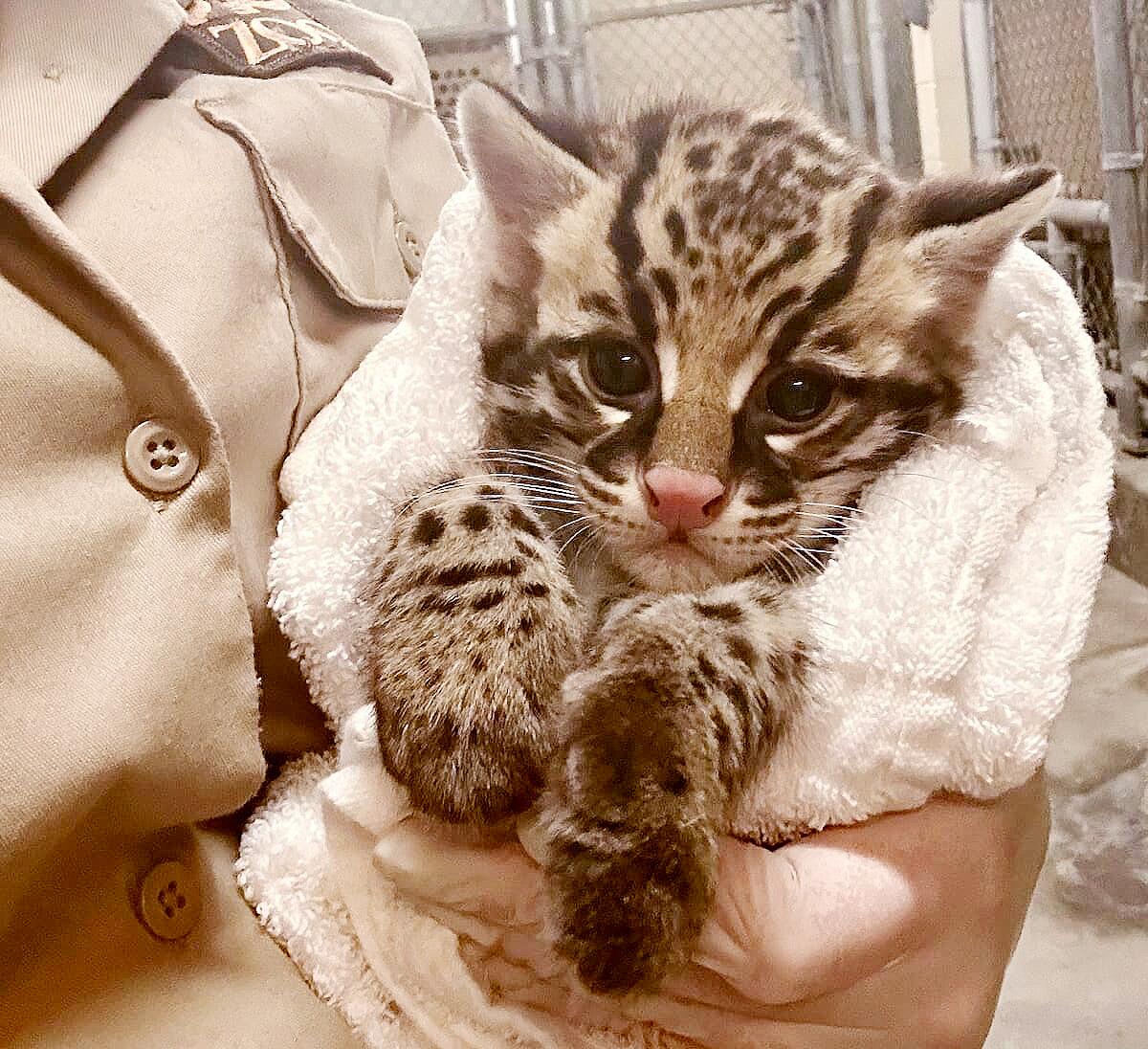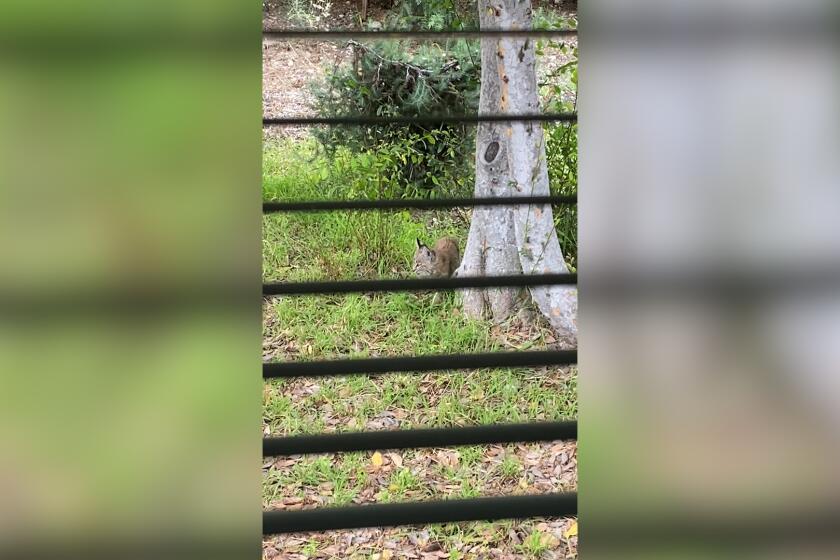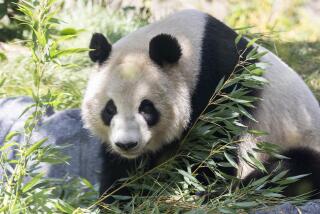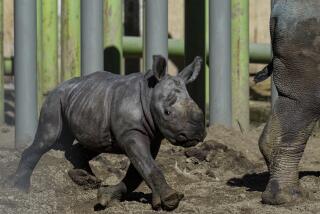Adorable ocelot kitten is born at L.A. Zoo. Here’s when you’ll be able to meet him

Visitors to the Los Angeles Zoo will soon have the chance to catch a glimpse of a new ocelot kitten, which zoo officials said is almost big enough to enter the animal’s public habitat.
Zoo officials announced Monday the arrival of the baby ocelot, a 19-ounce male born Sept. 12 to mother Maya, who was described as “an experienced nurturing mom,” according to the press release.
The kitten has been living “behind the scenes” under the care of his mom and zoo staff while he grows, receives vaccinations and is closely monitored. In the last three months, the kitten has already seen rapid development, now weighing 6 1/2 pounds — about five times his birth weight.
“His eyes opened after nine days and his teeth began to erupt after 20 days,” said Los Angeles Zoo animal keeper Stephanie Zielinski. “At first he was toddling around on unsteady legs, but he’s become stronger and more agile every day. He has a big personality now, and he’s brave and curious.”
When Claremont resident Patrick Cullen looked into his backyard last week, he discovered a bobcat mother and two kittens at play.
The kitten, which hasn’t yet been named, will move to his outdoor habitat “in the coming days,” when zoo officials are confident he can safely do so, the release said.
Ocelots, scientifically known as Leopardus pardalis, are listed as endangered by the U.S. Department of Fish and Wildlife, as the population native to Texas and Arizona has drastically declined due to habitat loss and fragmentation, as well as hunting. However, in Mexico, Central and South America, the ocelot’s population remains much healthier, according to the Center for Biological Diversity.
The solitary cat requires about seven miles of dense vegetation for its nocturnal hunting, making it particularly vulnerable to urban development, agriculture and transportation corridors, according to the Center for Biological Diversity.
The ocelot is a midsize cat — larger than a house cat but smaller than a bobcat, according to the zoo. They develop much faster than larger cats; by age 2, the ocelot kitten will be fully independent.
More to Read
Sign up for Essential California
The most important California stories and recommendations in your inbox every morning.
You may occasionally receive promotional content from the Los Angeles Times.











